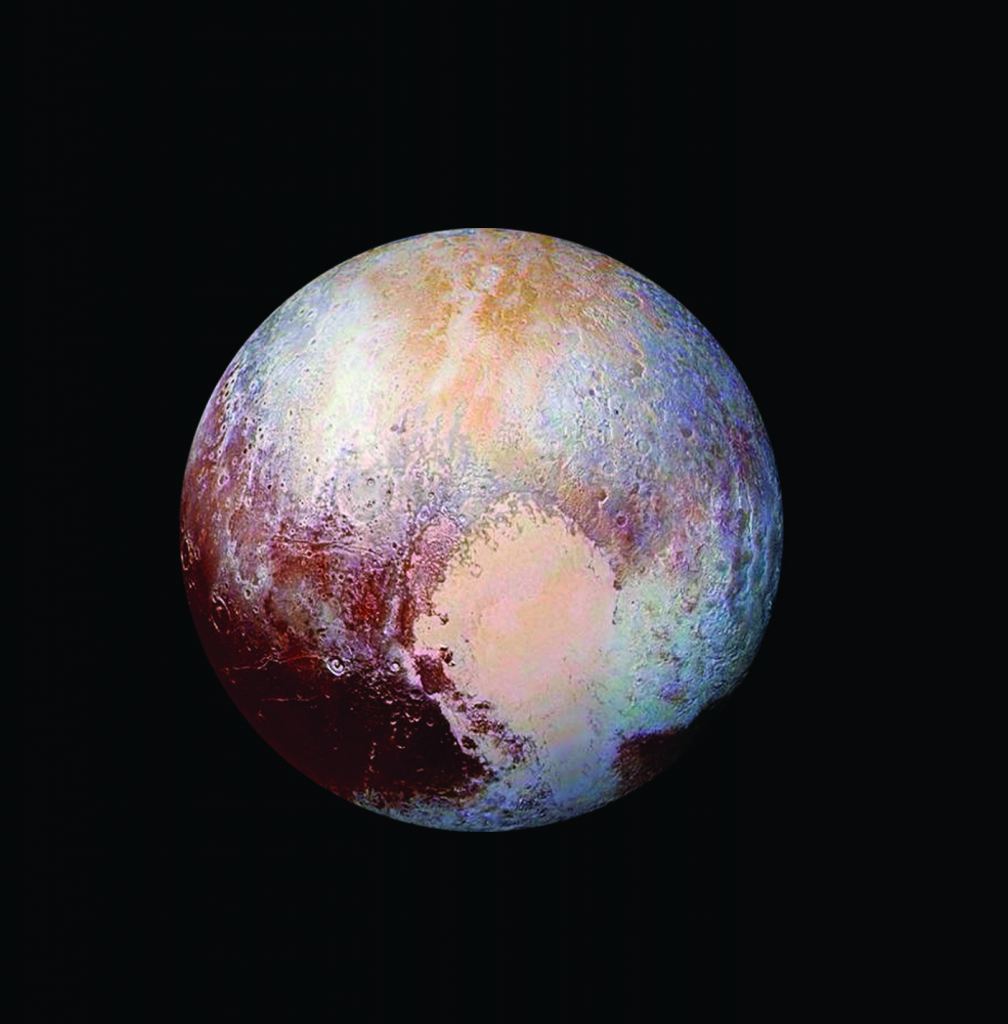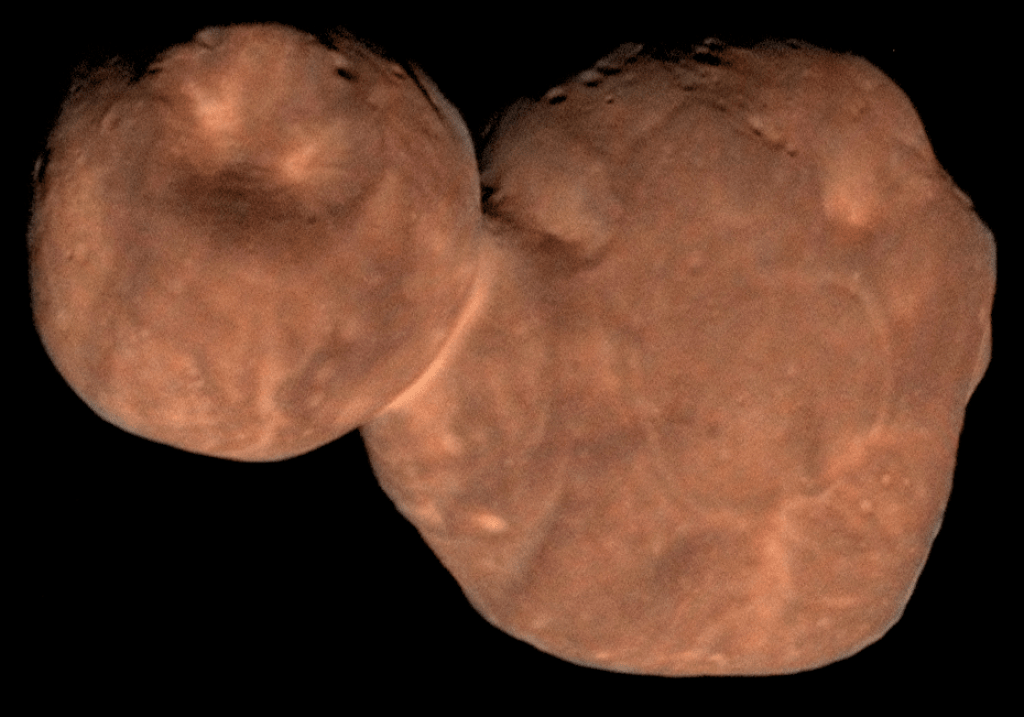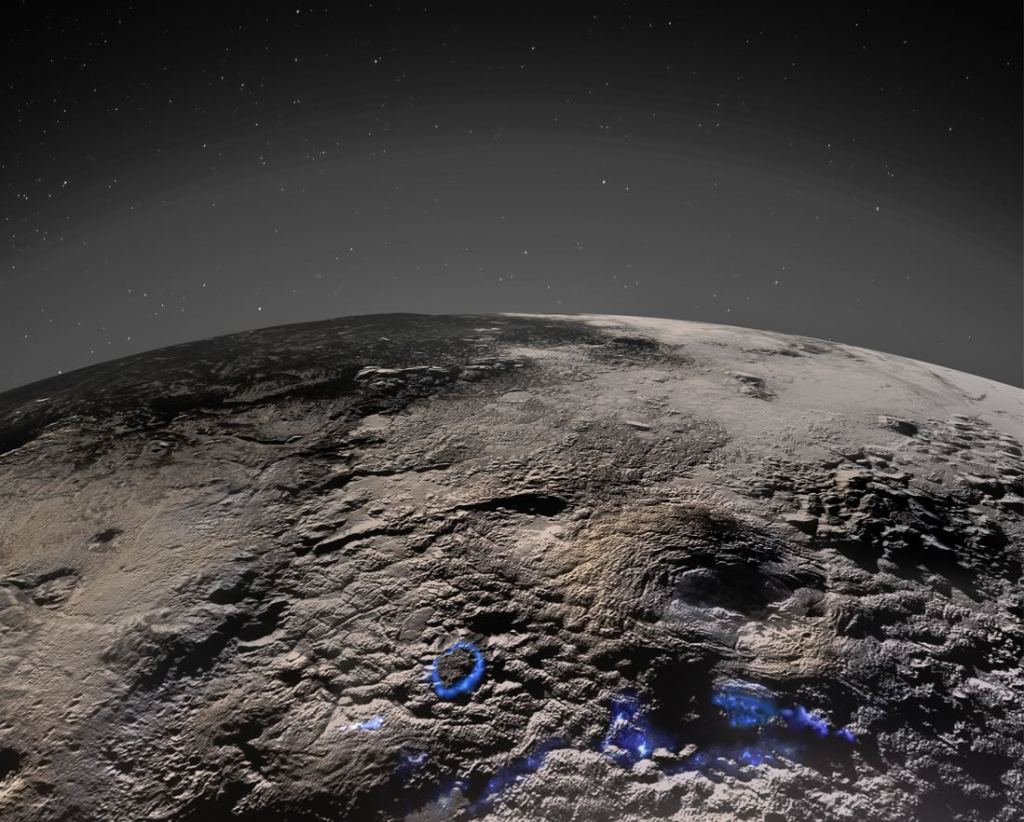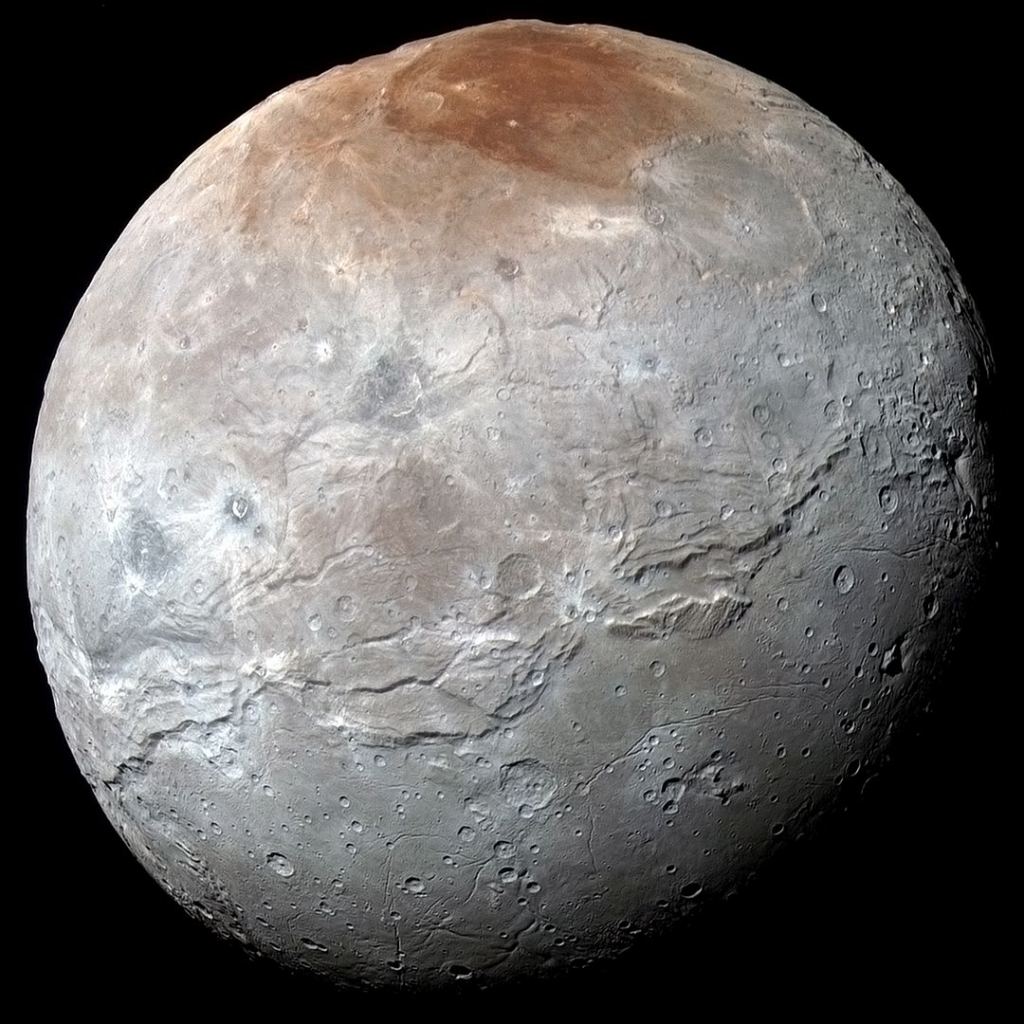Remember New Horizons? That plucky little spacecraft that gave us our first up-close looks at Pluto and Arrokoth? Of course, we do! Well, it’s still out there, traveling deeper into the Kuiper Belt. Just because it finished its primary mission doesn’t mean we’re done with it yet.
Every Monday, New Horizons sends back a little signal called a “Green Beacon”, signaling that it’s doing fine and hasn’t whacked into anything yet. To save money and fuel, though, the spacecraft entered hibernation mode and has been sleeping since June 1st, 2022. It’s going to stay that way until March 1, 2023. But, it’s not entirely asleep. Two of its instruments are still collecting data. The Venetia Burney Student Dust Counter is working, along with the charged-particle spectrometers called PEPSSI and SWAP. Their job is to collect information about the environment of space New Horizons is passing through.
New Horizons and its Second Extended Mission
 Far left: Pluto and its heart-shaped feature called “Tombaugh Regio” in honor of astronomer Clyde Tombaugh, who discovered the dwarf planet. Credit: Courtesy NASA / JHUAPL / SwRI.
Far left: Pluto and its heart-shaped feature called “Tombaugh Regio” in honor of astronomer Clyde Tombaugh, who discovered the dwarf planet. Credit: Courtesy NASA / JHUAPL / SwRI.
NASA recently extended the mission for New Horizons again. That makes two extensions. The primary mission was to get out to Pluto. The first extended mission got it past Arrokoth. Its Second Extended Mission begins on October 1 of this year and New Horizons has many tasks ahead of it. The team is currently using ground-based telescopes in Hawai’i and Chile to look for more Kuiper Belt Objects. It would be great if they found some for the spacecraft to fly by, or study from a distance. While this region of space does have a population of objects, it’s a huge region to search. Things aren’t very close together. But still, it would be cool to see some new worlds up-close and personal.
 This composite image of the primordial contact binary Kuiper Belt object 2014 MU69 (officially named Arrokoth) was compiled from data obtained by NASA’s New Horizons spacecraft as it flew by the object on Jan. 1, 2019. The image combines enhanced color data (close to what the human eye would see) with detailed high-resolution panchromatic pictures. Credits: NASA/Johns Hopkins University Applied Physics Laboratory/Southwest Research Institute//Roman Tkachenko
This composite image of the primordial contact binary Kuiper Belt object 2014 MU69 (officially named Arrokoth) was compiled from data obtained by NASA’s New Horizons spacecraft as it flew by the object on Jan. 1, 2019. The image combines enhanced color data (close to what the human eye would see) with detailed high-resolution panchromatic pictures. Credits: NASA/Johns Hopkins University Applied Physics Laboratory/Southwest Research Institute//Roman Tkachenko
Most of the time New Horizons will be doing science that can only be done by a spacecraft in its unique position. It’s billions of kilometers from the Sun and outfitted with unique data-collecting instruments. For example, since it’s moving through that area of space, it collects and studies the conditions in the KBO region. This includes its dust density and heliospheric conditions. But, that’s not all. New Horizons can also look outside the solar system and do a little astrophysics. It can monitor cosmic extragalactic background light, the UV radiation background, look at transiting exoplanets, and follow up on transient events in the galaxy and beyond. And, it can also be used to look at dark objects in the galaxy using microlensing.
Waking Up New Horizons for Extended Duty
Once New Horizons comes out of its hibernation, the science teams are going to do long-planned “look-backs” at Uranus and Neptune. Those two worlds will be in the right positions to allow a look at how they reflect sunlight. The data from those observations could provide some ideas about the two planets’ internal energy balance.
According to PI Alan Stern, there’s even more coming. “We also plan to make the most extensive and sensitive studies of the cosmological visible light and ultraviolet light backgrounds ever made,” he writes in a PI Blog entry. “Such measurements constrain origin theories of the universe while shedding new light on the total number of galaxies in the universe.”
New Horizons will continue to use its particle and plasma spectrometer instruments as it passes through the Kuiper Belt. Also on its plate: making the first all-sky ultraviolet maps of the heliosphere without light interference from the Sun. “And if that weren’t enough, those and other ultraviolet maps New Horizons will collect will also be used to study clouds and other structures in the gas of the very local interstellar medium – that is, the space between the nearest stars to the Sun,” Stern writes.
Continuing Pluto Studies
Seven years after the Pluto flyby, planetary scientists are continuing to glean information from the data New Horizons provided. They’ve been able to come up with an explanation for Pluto’s ice volcanoes involving multiple cryogenic eruptions. “The particular structures we studied are unique to Pluto, at least so far,” said Kelsi Singer, New Horizons deputy project scientist. “Rather than erosion or other geologic processes, cryovolcanic activity appears to have extruded large amounts of material onto Pluto’s exterior and resurfaced an entire region of the hemisphere New Horizons saw up close.”
 It appears that cryovolcanic activity most likely created unique structures on Pluto not yet seen anywhere else in the solar system. Image Credit: NASA/Johns Hopkins University Applied Physics Laboratory/Southwest Research Institute/Isaac Herrera/Kelsi Singer
It appears that cryovolcanic activity most likely created unique structures on Pluto not yet seen anywhere else in the solar system. Image Credit: NASA/Johns Hopkins University Applied Physics Laboratory/Southwest Research Institute/Isaac Herrera/Kelsi Singer
Pluto’s largest companion, Charon, is also coming in for some updates. In particular, scientists have zeroed in on its red polar cap. New Horizons scientists suggest that the reddish “tholin-like” material there is synthesized by ultraviolet light breaking down methane molecules. The molecules actually escape from Pluto and get captured by Charon, where they freeze onto the polar surface. Tholins are sticky organic residues formed by chemical reactions powered by UV glow scattered by interplanetary hydrogen atoms.
 Charon’s red polar cap as seen by New Horizons during the Pluto system fly-through. Credit: NASA/Johns Hopkins University Applied Physics Laboratory/Southwest Research Institute
Charon’s red polar cap as seen by New Horizons during the Pluto system fly-through. Credit: NASA/Johns Hopkins University Applied Physics Laboratory/Southwest Research Institute
“Our findings indicate that drastic seasonal surges in Charon’s thin atmosphere, as well as light breaking down the condensing methane frost, are key to understanding the origins of Charon’s red polar zone,” said SwRI’s Ujjwal Raut. “This is one of the most illustrative and stark examples of surface-atmospheric interactions so far observed at a planetary body.”
Where Is New Horizons?
For now, New Horizons team members are happy with their healthy spacecraft. Currently, it’s speeding out from the Sun at about 500 million km per year. Track its position on the New Horizons web page, and find a wealth of information about the spacecraft and its extended mission.
For More Information
The PI’s Perspective: Extending Exploration and Making Distant Discoveries
New Horizons: NASA’s Mission to Pluto and the Kuiper Belt

